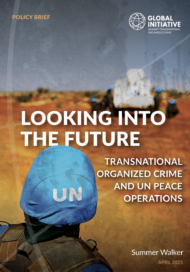Posted on 20 Dec 2009
In September, UNODC published its Afghan Opium Survey 2009 with detailed estimates of cultivation, production, labour force, revenues and domestic prices.
This Report is a sort of a sequel: it presents a perspective that is both deeper in scope and broader in geographical coverage. It looks at the multiple consequences of Afghan drugs as they move through neighbouring states, along the Balkan and Eurasian routes, ending up in Europe, the Russian Federation, even China and India.
This analysis is proposed to help the international community appreciate the fact that we all are part of the Afghan drug problem: hence, we all must work for its solution, addressing all links of the drug chain: (i.) assistance to farmers to reduce supply, (ii.) drug prevention and treatment to curb demand, and (iii.) law enforcement against intermediaries. These intermediaries are not only shady characters linked to international mafias. They are also (i.) white collar Afghan officials, who take a cut by protecting the drug trade, as well (ii.) the religious fanatics and political insurgents who do the same to finance their cause.



